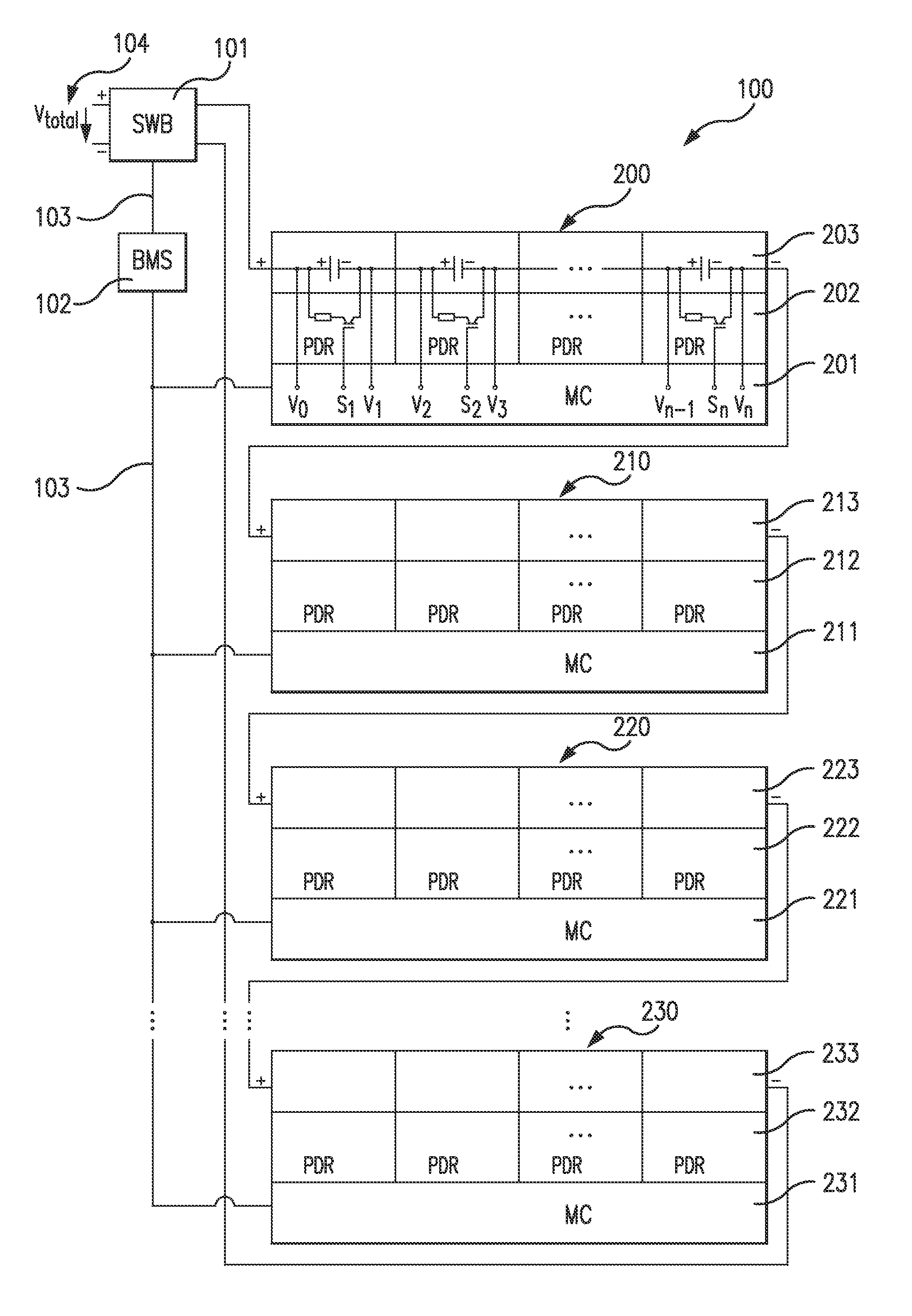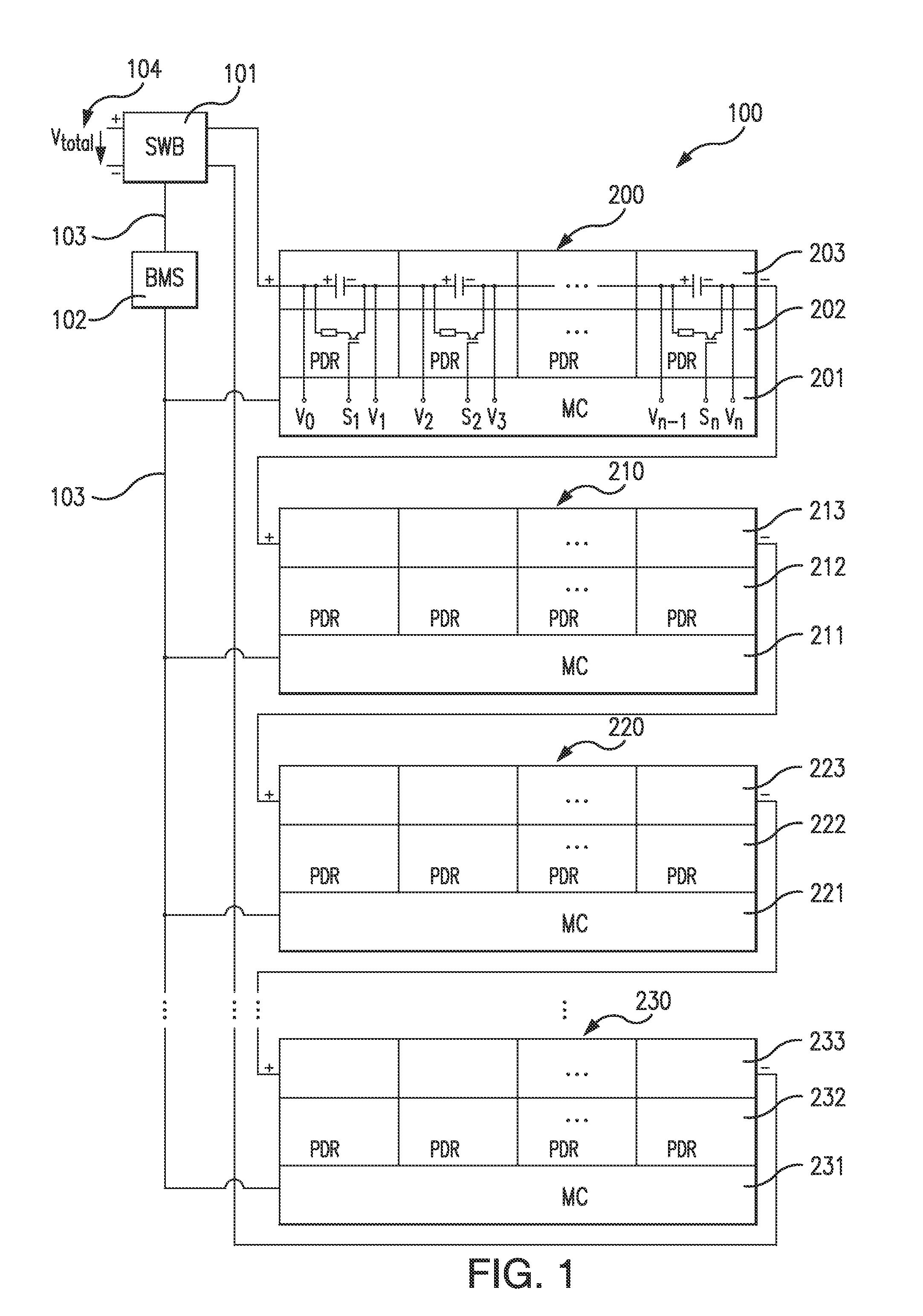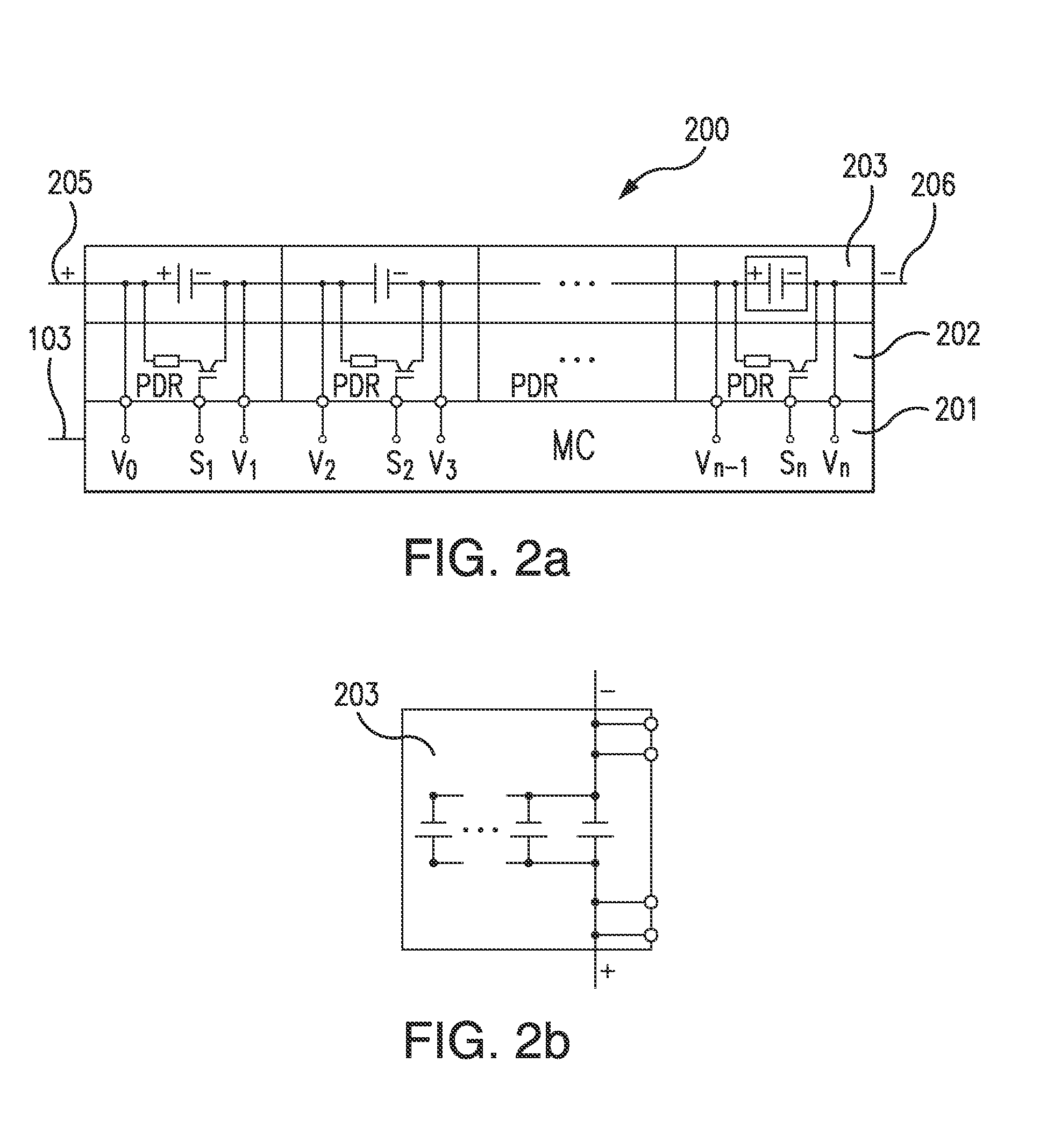Balancing Voltage for a Multi-Cell Battery System
a battery system and multi-cell technology, applied in the direction of battery/fuel cell control arrangement, electric devices, transportation and packaging, etc., can solve the problems of destroying the cell completely, affecting the expected lifetime of the cell, and affecting the ability of the battery to be replaced
- Summary
- Abstract
- Description
- Claims
- Application Information
AI Technical Summary
Benefits of technology
Problems solved by technology
Method used
Image
Examples
Embodiment Construction
[0039]FIG. 1 shows a schematic view of a multi-cell battery system 100 according to an example embodiment of the present invention.
[0040]In FIG. 1 a number of battery modules 200, 210, 220, 230 containing multi cell-batteries are electrically connected in series. The resulting total voltage of the battery cells thereby adding up to the desired battery systems' total output voltage Vtotal 104, which can be accessed via the output terminals of the switchbox 101. The switchbox 101 indicated with SWB in box 101 is a subsystem of the battery system 100 and includes internal contactors that connect or disconnect the battery system's primary electrical power interfaces to an electrical load. In one example, the electrical load connected to the electrical power interface could be the sum of electrical consumers in an electrical vehicle. For connecting or disconnecting the contactors a relay or power electronic switches with power semiconductors can be used. The configuration of the system a...
PUM
 Login to View More
Login to View More Abstract
Description
Claims
Application Information
 Login to View More
Login to View More - R&D
- Intellectual Property
- Life Sciences
- Materials
- Tech Scout
- Unparalleled Data Quality
- Higher Quality Content
- 60% Fewer Hallucinations
Browse by: Latest US Patents, China's latest patents, Technical Efficacy Thesaurus, Application Domain, Technology Topic, Popular Technical Reports.
© 2025 PatSnap. All rights reserved.Legal|Privacy policy|Modern Slavery Act Transparency Statement|Sitemap|About US| Contact US: help@patsnap.com



